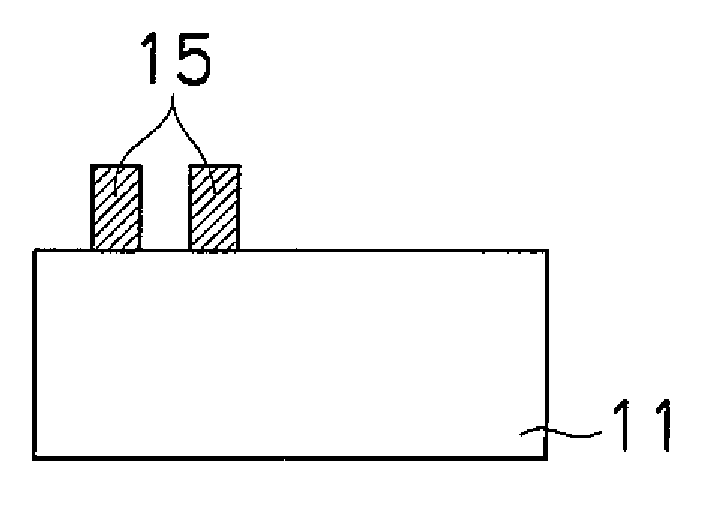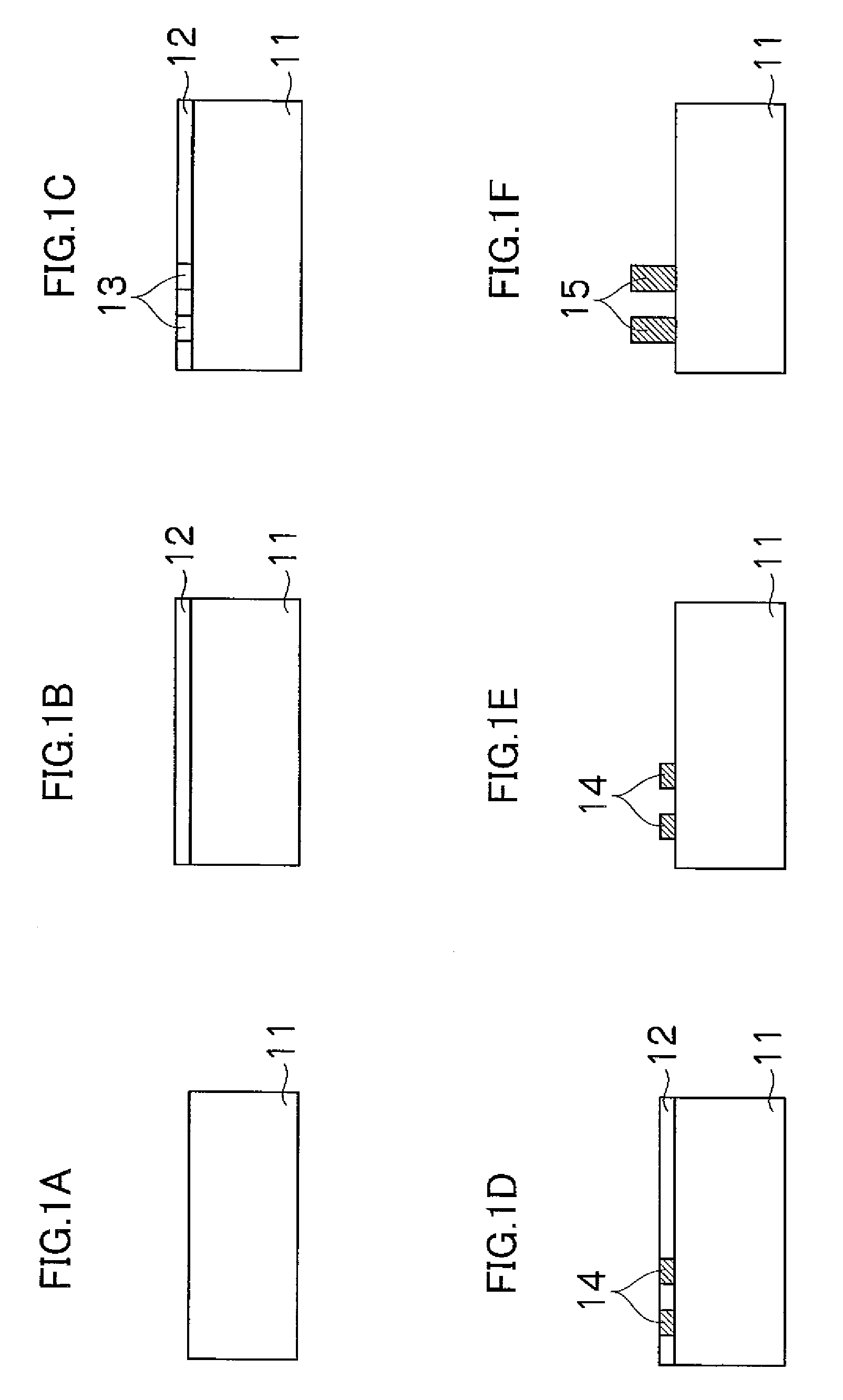Metal pattern forming method
a metal pattern and forming method technology, applied in the direction of printed circuit manufacturing, liquid/solution decomposition chemical coating, coating, etc., can solve the problems of high cost, high cost, and high cost, and achieve high degree of accuracy, increase the thickness of the metal pattern, and increase the film thickness
- Summary
- Abstract
- Description
- Claims
- Application Information
AI Technical Summary
Benefits of technology
Problems solved by technology
Method used
Image
Examples
Embodiment Construction
[0030]The method of forming a metal pattern according to an embodiment of the present invention forms a desired metal pattern by depositing two types of solution, namely, a metal salt solution and an acetylene compound, separately onto a substrate, thereby synthesizing a metal acetylide compound on the substrate and precipitating metal particles. In this case, at least one of the metal salt solution and the acetylene compound is deposited by means of an inkjet apparatus to print a metal pattern directly onto the substrate.
[0031]Firstly, the metal salt solution will be described. The metal in the metal salt solution according to the present embodiment is an element belonging to group 8, group 9, group 10 or group 11 of the periodic table. For example, nickel, ruthenium, rhodium, palladium, platinum, copper, silver, gold, or the like, can be used as the metal in the metal salt solution, and it is preferable to use silver or copper. Furthermore, it is also possible t...
PUM
| Property | Measurement | Unit |
|---|---|---|
| temperature | aaaaa | aaaaa |
| temperature | aaaaa | aaaaa |
| volume | aaaaa | aaaaa |
Abstract
Description
Claims
Application Information
 Login to View More
Login to View More - R&D
- Intellectual Property
- Life Sciences
- Materials
- Tech Scout
- Unparalleled Data Quality
- Higher Quality Content
- 60% Fewer Hallucinations
Browse by: Latest US Patents, China's latest patents, Technical Efficacy Thesaurus, Application Domain, Technology Topic, Popular Technical Reports.
© 2025 PatSnap. All rights reserved.Legal|Privacy policy|Modern Slavery Act Transparency Statement|Sitemap|About US| Contact US: help@patsnap.com



